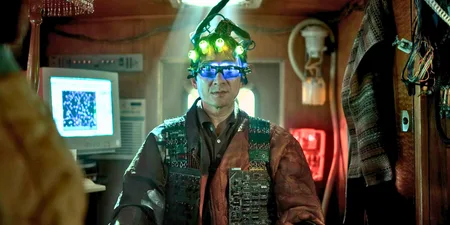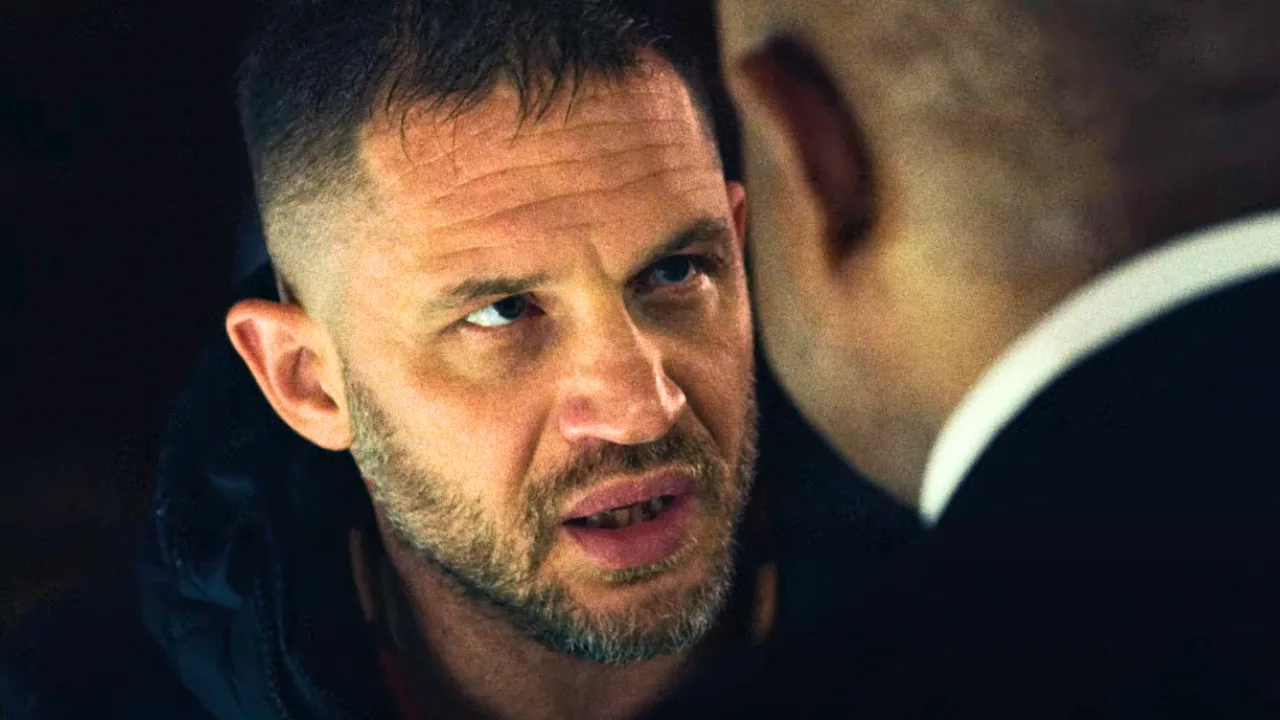“There are movies which we won’t mention, that are just a CGI Fuck-You fest,” says stuntman-turned-John Wick director Chad Stahelski, taking no prisoners
“Let’s blow some shit up, and half the movie is directed by the VFX team and not the director. That’s just lazy directing.”
The John Wick series has gone from little-hyped action movie to full-blown cult phenomenon, with the latest instalment John Wick: Chapter 3 – Parabellum seeing the series reach new levels of martial arts delirium. And Stahelski is the man behind it all. Trained at the dojo of Bruce Lee’s legendary training partner Dan Inasanto, he went from doing martial arts on cheap action movies, to being Keanu Reeves’ stunt double on The Matrix to giving American action movies the shot in the arm they desperately needed.
In 2014, a mid-budget action thriller called John Wick was released. On first glance, it didn’t seem like a bog-standard revenge flick. It had been over a decade since The Matrix, and while Keanu Reeves was still an A-list star, the posters made it look a bit like the straight-to-DVD purgatory into which Bruce Willis and Nic Cage have recently slid.
Then word of mouth started to spread. This was a revenge movie where the dude’s motivation was that he wants to get the people that killed his puppy. It had a stylish, dreamlike quality, set in a strange, unexplainable world of secret societies and mythical assassins. A mysterious hotel for hitmen called The Continental, with its own unwritten rules and currency.
But what made the film really special was the action. In an era dominated by superhero CGI slugfests, Avid fart editing that cuts fight scenes to the point of incomprehensibility, and shaky camerawork that all but obscures what is going on, John Wick was a revelation. The shootouts and fist-fights were shot in clean, clear long takes, that focused on clarity and geography instead of spectacle. It resonated with action movie fans in a way few films have in recent years, and spawned two sequels expanding on the mythology and upping the mayhem, with spin-offs and a TV show in the pipeline.
It was the project that 50-year-old director Chad Stahelski’s life had long been building to. Born in Massachusetts, into a sport-obsessed family, he got into martial arts at a young age – “I started off as a judo guy, then I was a karate guy for a while,” he says of his youth. He eventually moved to the West Coast to attend the University of Southern California, which brought him into contact with film industry pros that noticed his martial arts talents.
“I did an exhibition match in Hollywood, senior year of college,” Stahelski says of his first break. “At the time there were two very famous stunt coordinators in the audience who saw me, and said ‘Why don’t you get into stunts, it could be fun?’” His first stunt job was on a 1993 film called Knights, a cheapie vehicle for kickboxing champ Kathy Long, directed by beloved low-budget auteur Albert Pyun. “Post-apocalyptic, cyborg knights in the future,” laughs Stahelski. “I don’t know if it holds up, but it’s fun!”
https://youtu.be/Kolpo4fWDmw
It was around this time he joined Inosanto Academy of Martial Arts in Los Angeles. Dan Inosanto is a legendary figure in martial arts, who was a training partner of Bruce Lee, and became the principal spokesman for Lee’s hybrid fighting style of Jeet Kune Do following his early death. Inosanto’s students have included everyone from Denzel Washington to MMA star Anderson Silva.
“He was very eclectic in his approach,” says Stahelski. “He did anything from Filipino Eskrima, to Muay Thai, to Brazilian jiu-jitsu, boxe française savate and Indonesian pencak silat. All different kinds of things mixed in.”
At the Academy Stahelski would meet many of his team that he still works with today – but two names would stand out. One was Jeff Imada, a veteran film and TV stuntman who already had over a decade of experience by the early 1990s. The other was Brandon Lee, the only son of Bruce himself, who was at the beginning of his own burgeoning acting career.
Imada was primary fight choreographer on the 1994 comic book adaptation The Crow, which looked to be Lee Jr’s mainstream breakout role. However, tragedy hit when Brandon was killed on-set after he was shot with a defective blank round fired by another actor. With just eight days of shooting left, the decision was made to continue and try and finish it with stand-ins. Stahelski fit the bill, and CGI was used to digitally place Lee’s face onto his.
Stahelski then continued to work solidly, with over 70 stunt credits to his name, bouncing between blockbusters, television and low budget movies. “It was a very fulfilling job because you get to use your whole body, hopefully your intelligence to survive the job. I got fortunate to work will all the right people, who showed me the craft.”
It was a job not without its risks, but Stahelski brushes any questions about his ‘most dangerous’ stunt. “Look, we wouldn’t do a stunt if there wasn’t a very high probability of success. No one wants to get messed up. Honestly, the ones that get you the most are the simple ones. It is the simple ones that beat the crap out of you.
“Anything really big has been thought out and rehearsed. I have been buried alive, I have dropped down 60 foot underwater and had to escape. They are all challenging. But the dangerous part comes when you are not prepared and rushing.”
He says it is actually the cumulative build-up of bumps and bruises that bothered him the most. “I have only been tweaked a few times on set, and it usually because of human error and simple mistakes. I was a fight guy, doing acrobatics, fight scenes, jumping through windows, just basically taking abuse. And it is the wear and tear that it puts on your body. No one likes being hurt – don’t let stunt guys fool you, I hate being hurt.”
The worst injury he suffered was a fractured neck, on a “really shitty movie of the week. It wasn’t even spectacular, just me and another guy going over a railing.” It put him on the shelf for six months, time he used to write, and teach himself to edit. They were skills that would come in handy in the next stage of his career.
In 1998, Stahelski would audition to be Keanu Reeves’ martial arts double on an upcoming sci-fi movie called The Matrix. Needless to say, he got the part, and it changed his life. He formed a productive working relationship with Reeves, doubling for him not only the rest of the trilogy, but also other movies like Constantine, The Replacements and Thumbsucker, and even acting as fight choreographer for Reeves’ directorial debut Man of Tai Chi. It was therefore no surprise that Reeves would take the lead in Stahelski’s first film as director, John Wick.
Reeves wasn’t the only person on the set of The Matrix who would have a considerable effect of Stahelski. He got to work with influential Hong Kong fight choreographer Yeun Woo-Ping – a god to kung-fu movie fans, and the man behind the action in Kill Bill, Kung Fu Hustle and Crouching Tiger Hidden Dragon.
“Him and his team took it to another level. It wasn’t just a group of guys throwing moves together, they had a creative standpoint, an vision, an objective. They treated it a lot more like dance. We switched gears so it was not an overly masculine, competitive [atmosphere]. It was more about a flow, and storytelling.”
It is this approach that has led to the John Wick series’ wonderfully clean, immersive approach to action. “I love watching ballet, and live dance. I love going to see Broadway and stage work,” Stahelski continues. “The concept was, if you are sitting in the audience, what would a fight scene look like? That’s why you see a lot of long profiles, tracking shots. I want you to be invested in that. If you see actual Keanu Reeves or Halle Berry doing the sequence, and it’s not a stunt double, then you are more apt to believe that John Wick the character could do that. It’s a way to be more immersive.
“When watching theatre, when have you seen the stunt double? When has the show stopped and the stunt double comes in? Have you ever seen that? No. When someone is doing Shakespeare, the actor picks up the foil and does a fencing scene, there’s no stunt double. No CGI, no wires. That’s our attitude. You need the guy who is going to do that.
To do that though, you need actors who are willing to put in the effort. Stahelski says that it is a lot harder to find actors who will sign up for the gruelling hours required. “People always say they will do their own action, but you have to understand what the training means. When someone says they do five months of training, that is hours and hours, and you are miserable! And you have no life!
“When Halle and Keanu were training, they were in three different gyms a day. That’s a ten-hour day. And you are fucking exhausted. You are losing money because you are not taking the romantic comedy that you got offered by Warner Bros. You are not getting paid like you are to do the production. So it is a massive year-long commitment. What is Keanu like? He’s will to do that commitment.”
Stahelski gets animated describing this – you can tell this is what fires his filmmaking. “We do the choreography plan very, very backward. Most times, the cast is trained to do 30 moves, and that’s all they do. For us, we think the best way to fake being good is just to be good. So we just train them like stuntmen, so Keanu and all the cast just learn martial arts, and we piece it together on the day.”
Most movies of this size will be heavily storyboarded, and use computer-generated pre-visualisations of scenes, so everything is already finely planned out before any of the actors get anywhere near the set. Stahelski is very against that, instead working out the fight scenes on location.
“There’s a reality to filmmaking in the physical world. You can do as many pre-visualisations as you want, you can have VFX guys in three countries that have never been on a location. It is different when you have horses. Horses don’t give a fuck what your shooting schedule is. The Brooklyn Police don’t care what your shooting schedule is. The weather doesn’t care what your shooting schedule is.
“After so many years of second unit, we know what’s coming. I’ll spend three times as much money in prep, but I’ll shoot it in a third of the time.”
It might go against the established rules of studio filmmaking, but it works. John Wick 3 is a thunderously entertaining ride. It is a movie that goes from Keanu Reeves fucking up dudes with dusty books in the New York Public Library, to being chased on horseback to stumbling up a sand dune in Morocco in an immaculate suit. It is wild and unpredictable and exactly what we need in the increasingly homogenised Hollywood machine.
“I think the biggest mistake they make in action in Hollywood today is that they go: ‘Story, story, story. Cut! Ok, action sequence’. Director steps out, stunt director comes in, stunt doubles come in, and the actors go home,” concludes Stahelski, and the end of our conversation.
“In John Wick, we don’t ever want to stop the story and we don’t ever want to stop the action.”
John Wick: Chapter 3 – Parabellum is in cinemas May 15th
RELATED ARTICLES






MORE FROM JOE



















MORE FROM JOE

























